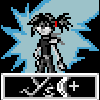Hi all,
Recently I worked on an indie game with procedurally generated levels. Obviously there are pros and cons. At some point I'd like to be involved with something a bit more designed but I have no experience with level designers, so here's my questions:
- What does a level designer expect, e.g. tools, guidance?
- What should you expect from a level designer, e.g. complete levels, unskinned but working levels, diagrams?
- How does the role overlap with other parts of the creative process?
- How does a level designer work with the rest of the team, e.g. do they directly ask for art assets, leave it to someone else, etc?
For example could you say something like the below and expect a reasonable result?
- Here's a bunch of prefabs for my levels
- Here's the general theme and background
- Here are the basic mechanics available in my game
- Here are the types of challenges I want the player to face
- I want a level with X rooms, Y entrances and Z exits
- Here are some gameplay moments that I want, e.g. getting chased down a mirrored hallway by a monster
Thanks,
JT







